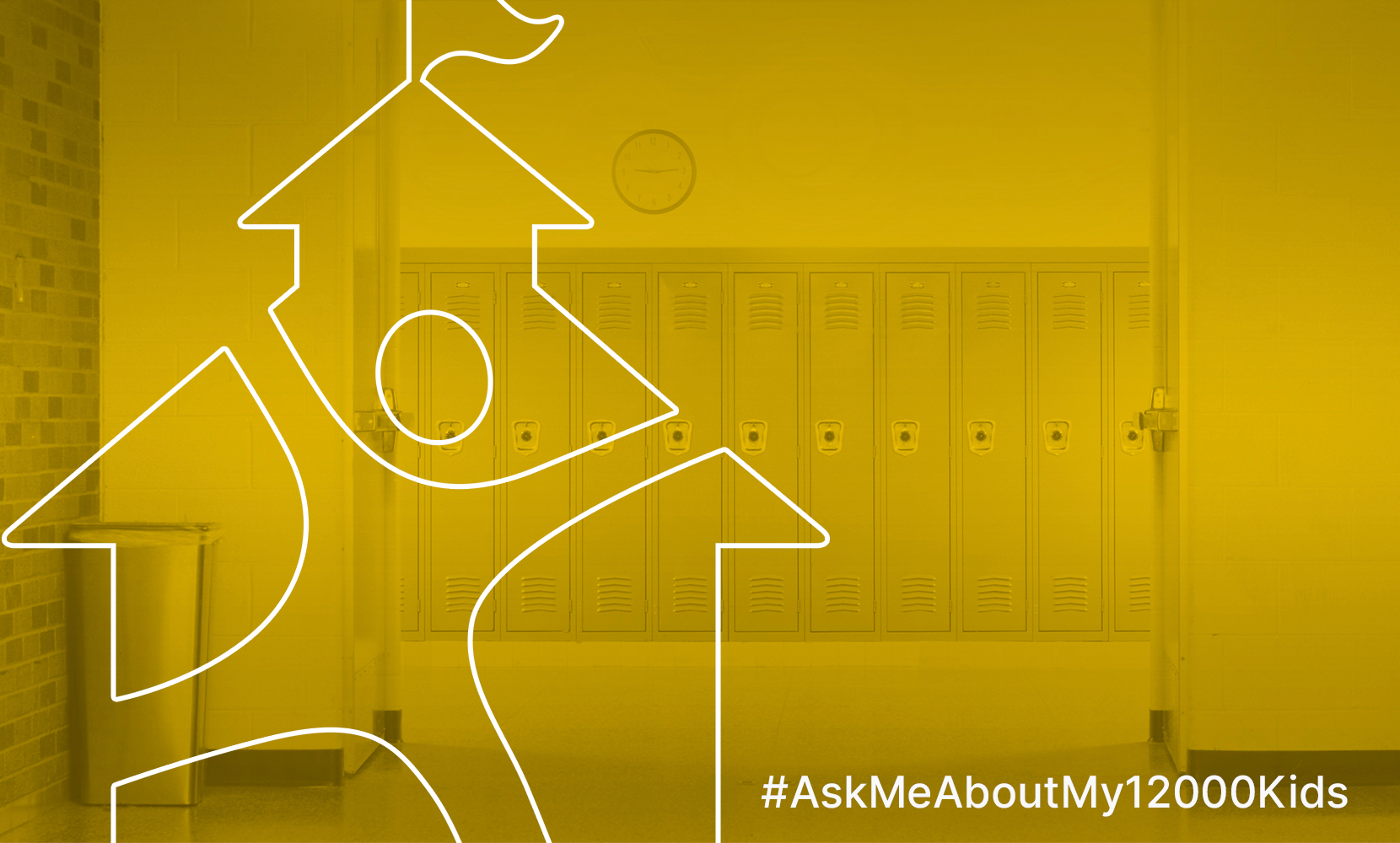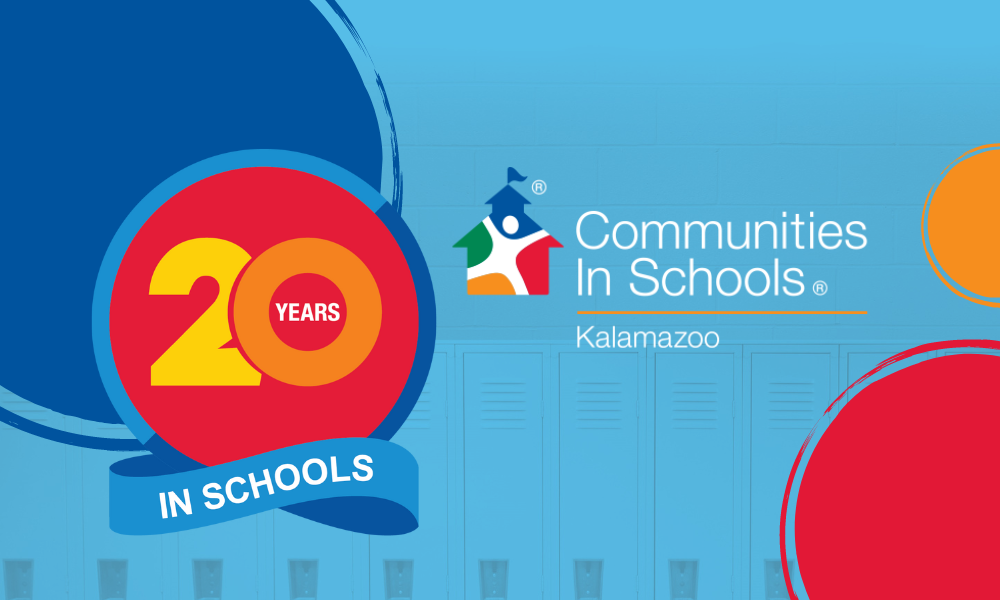
We met up with Dr. Janice Brown on the heels of the 10th Anniversary Promise Community Celebration in Bronson Park. A Communities In Schools of Kalamazoo Board Member since 2000, you can read our conversation with her in our latest newsletter which has a theme of “promise.” Here is just a little of what she had to say, including a few bites we didn’t include in the newsletter due to space constraints.
Since the announcement of The Kalamazoo Promise®, what have you learned over these past ten years? What has surprised you? Disappointed you?
I’ve learned many things since the announcement of The Kalamazoo Promise®. The first thing I’ve learned about our youth is how committed and resilient they are in carving their future. I’m amazed at how many times they keep trying. It’s very difficult to go to college. When I see somebody who has struggled and left college but then shows up and says, “I’m here to try again,” that makes me so happy.
How unknowingly smart we were to offer a ten year window. So much growth and maturation can take place in that time. Youth are not stagnant. They can grow over that ten year period and that can help them accomplish their dreams. I’ve learned that the youth understand the privilege and the obligation about such a tremendous gift and they are interested in paying it forward.
We don’t even know yet the implications of The Kalamazoo Promise®. We are in our tenth year and being a ten-year-old is like being a fifth grader. While we think we know everything, we are just beginning to understand the implications and the ripple effect this is starting to create.
Can you talk more about how youth are paying it forward?
I can tell you by a story. One of our graduates has become a nurse and he has consciously decided to work with what I think is one of our most difficult populations—people going through drug and alcohol detox. When asked why he has chosen to do this, his response was, “I love the work and I want to give back to the community that is so good to me.”
This desire to pay it forward was also clearly demonstrated at the tenth anniversary party in Bronson Park. Many pre- and post-Promise scholars attended. I’m just amazed at their enthusiasm. They want to be involved and pay it forward. On Promise Day during winter break over a 100 Promise scholars returned to talk to kids at Loy Norrix about college. I have loads of letters, in a variety of ways expressing gratitude for this gift.
Paying it forward isn’t just emotional or subjective. We have data that our youth are improving their outcomes both at the K-12 and post-secondary level. For example, we’ve seen a 15% drop in the number of kids that need zero level classes [classes to take to prepare for college]. More students are coming to college college-ready is a delightful surprise. On the community side, businesses, organizations, and individuals have been incredibly generous in giving and participating in the success of the Promise. I can’t name names because there are so many. During my time as Executive Director of The Kalamazoo Promise® I was only told no once in those five years. And even that no wasn’t really a no; they wanted to be asked again in the future, when they were in a better financial position.
The Promise celebration in the park—all the costs were bore by the community, another excellent example of the generosity of our community and the universities that serve them.
What’s surprised me? I didn’t anticipate the national media coverage or that vast amount of communities want to replicate the promise in some way. We are known as the flagship of this type of scholarship. I get phone calls weekly from around the country with communities wanting to replicate their own promise. Here in Michigan we have promise communities—ten promise zones—these are direct spin offs from the promise.
What, in your opinion, are some ways members of this community can help our children reach their promise?
People always ask, “What can I do?” If everyone took on one child we’d have an increased success rate. One very simple thing that doesn’t take a long term commitment that working with one student does is that non-profits, government, businesses can try to do a better job of including and infusing youth in the work they do. Youth are very interested in learning about occupations, non-profits, and how government works. Just doing this could make a big difference. I think it will happen. We will see a convergence of our community really wrapping their arms around our youth—youth that they didn’t know before— which is the beauty of it. Youth like and thrive with that attention and security of adult advocates.
Kalamazoo, as you know, is rich with so many resources to support kids. What is unique about CIS?
I have been a long-time advocate of Communities In Schools. The reason is because it is the organization that helps frame the wonderful work that the nonprofits do. CIS has the capacity to individualize the nonprofit work and get those services to the children who need it. And, of course, the vehicle is through the schools. As an educator, I’m a CIS endorser. We now have an arm-in-arm partner who can take away the burden of the social needs of our students so that teachers and educators can do the best that they can do—and that is teaching for learning. I also believe in CIS because of the measurement system. CIS measures its progress based upon student data from KPS in reading, math, behavior, and attendance.
The anonymity of the donors puzzles people. What unique opportunities does this anonymity give our community?
I’ve never asked the donors why they chose to be anonymous. It doesn’t matter. It places the burden on the development of the community and in the hands of the families of the children and that is where it belongs. The donors have more than done their part by their incredible investment of dollars. We have to figure out the rest. We don’t want to burden them with further work when they have already worked so hard to give this money. Now it’s in our hands.
It’s a brilliant model. Like you mentioned, the anonymity causes us to turn to each other to figure out how to make this work and take ownership.
There are many interpretations out there.
I’m going with yours. Any final thoughts?
Never miss an opportunity to say thank you to the Kalamazoo Promise ® donors. And thank you CIS, for being such a strong organization for bringing our students to the promise.
Thank you, Dr. Brown!
To find out what four words encapsulate The Kalamazoo Promise® for Dr. Brown, what she believes is the biggest misconception about The Kalamazoo Promise®, and more, read the rest of the conversation here.




